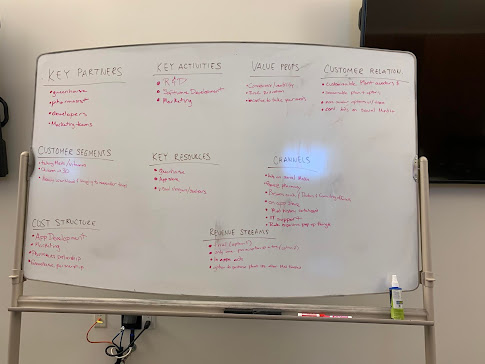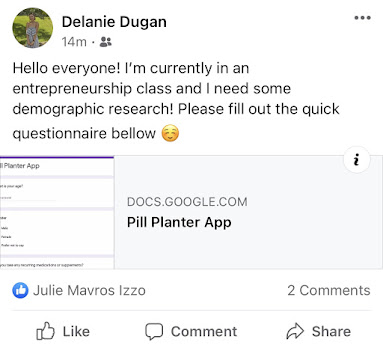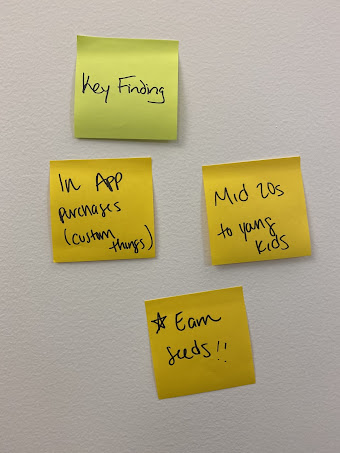Art of Entrepreneurship
Monday, November 9, 2020
OVERVIEW
DAY ONE
Sunday, November 8, 2020
DAY TWO
November 7th, 2020
We started our day with a short lecture on the process we should progress through over the weekend and then got to work!
Our first step was to figure out the business model canvas. With 9 different segments to work through it took some time for us to work out each section. We developed our demographic, payment features, and resources.
Note from Meeting with Mata:
- Adjust age demographic
- How is this different? - Offers a reward
- Remove the real-life plant option (diverges from an original idea)
- Focus on this as an interactive game (different plant features and additions)
- Research game development and how they engage “leveling up”
- Ask people how many prescriptions do people take?
- Maybe too many plants potentially? - Personal preference
- Ask about times (when they take meds)
Our next step was to collect some demographic research. We each posted on our Instagram, Snapchat, and Facebook. We started by making a list of questions and created a Google Questionnaire. We weren’t able to easily add the link to Instagram, so we chose a few questions and added them to the story. Here is a screen recording of the Instagram questions, Snapchat post, and Facebook update.
After a quick trip to Central Market, we began to look through the finances while we wait for more survey results to come in. Based on our business model canvas our projected expenses are on
- App Development and Design
- Marketing and Advertising
- Partnership and Distribution
- Problem and Validation - MVP
- Execution and Design Solution - Solution interaction
- Business Model - cost, targets market, alternatives, and competition
- Next 4 weeks - assumptions and hypothesis
Here's a messy, but effective break down of the math:
We ended the night working out the presentation. Hannah made a rough layout of the content title for each of the slides and we all worked on filling the info in. We worked late into the night trying to finish up or presentation and other visual content we want to add. Tomorrow our focus is to tie up the loose ends and practice, practice, practice!
Saturday, November 7, 2020
DAY THREE
OVERVIEW
This blog is an outline of our Art of Entrepreneurship event over the weekend of November 6th through the 8th. This course is a startup week...

-
This blog is an outline of our Art of Entrepreneurship event over the weekend of November 6th through the 8th. This course is a startup week...
-
November 6th, 2020 Our evening began with videos for inspiration and definitions of entrepreneurship. We overviewed some keywords and models...
-
Today is the presentation day! A lot of us stayed up late last night trying to pull everything together for our presentation. After research...




























